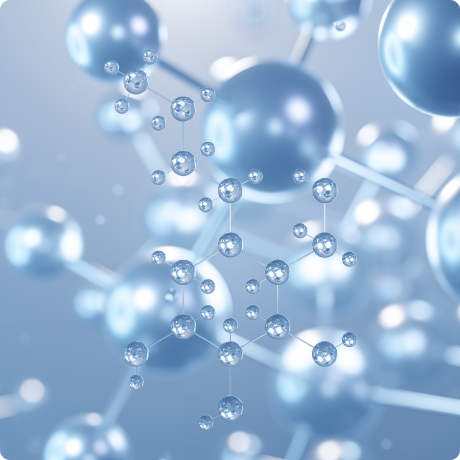Congenital adrenal hyperplasia (CAH) is an inherited (congenital) endocrine (hormone) disorder caused by mutations in genes coding for enzymes in the adrenal gland that synthesize steroid hormones. Patients with CAH have adrenal insufficiency, that is a deficiency in the stress hormone cortisol. Their body’s response to this is to try and push the adrenal glands harder and they therefore enlarge in size (hyperplasia).1


CAH is one of the most common inherited endocrine disorders. The worldwide incidence of classical 21-hydroxylase-deficient CAH is 1 in 15,000 to 20,000 births. Approximately 70% of the affected infants have the salt-wasting form, while 30% have the simple virilizing form. The condition affects individuals of all ethnic backgrounds, although the incidence rate can vary among different populations.2
Patients with CAH essentially have two challenges; a deficiency of cortisol with or without aldosterone deficiency and an excess of adrenal androgens such as testosterone. The excess of male hormone such as testosterone leads to many of the problems such as virilization of the female infant, early (precocious) puberty in both boys and girls and infertility problems in men and women. Throughout life patients with CAH are prone to adrenal crisis due to their cortisol deficiency.
CAH is usually obvious at birth or soon after because of the ambiguous genitals, early virilization, or salt wasting. Atypical cases may be recognized around puberty with the presence of virilizing signs or oligomenorrhea in females.
Patients with CAH essentially have two challenges; a deficiency of cortisol with or without aldosterone deficiency and an excess of adrenal androgens such as testosterone. The excess of male hormone such as testosterone leads to many of the problems such as virilization of the female infant, early (precocious) puberty in both boys and girls and infertility problems in men and women. Throughout life patients with CAH are prone to adrenal crisis due to their cortisol deficiency.
CAH is usually obvious at birth or soon after because of the ambiguous genitals, early virilization, or salt wasting. Atypical cases may be recognized around puberty with the presence of virilizing signs or oligomenorrhea in females.
Patients with CAH essentially have two challenges; a deficiency of cortisol with or without aldosterone deficiency and an excess of adrenal androgens such as testosterone. The excess of male hormone such as testosterone leads to many of the problems such as virilization of the female infant, early (precocious) puberty in both boys and girls and infertility problems in men and women. Throughout life, patients with CAH are prone to adrenal crisis due to their cortisol deficiency.
CAH is usually obvious at birth or soon after because of the ambiguous genitals, early virilization, or salt wasting. Atypical cases may be recognized around puberty with the presence of virilizing signs or oligomenorrhea in females.
Patients with CAH essentially have two challenges; a deficiency of cortisol with or without aldosterone deficiency and an excess of adrenal androgens such as testosterone. The excess of male hormone such as testosterone leads to many of the problems such as virilization of the female infant, early (precocious) puberty in both boys and girls and infertility problems in men and women. Throughout life patients with CAH are prone to adrenal crisis due to their cortisol deficiency.
CAH is usually obvious at birth or soon after because of the ambiguous genitals, early virilization, or salt wasting. Atypical cases may be recognized around puberty with the presence of virilizing signs or oligomenorrhea in females.
Patients with CAH essentially have two challenges; a deficiency of cortisol with or without aldosterone deficiency and an excess of adrenal androgens such as testosterone. The excess of male hormone such as testosterone leads to many of the problems such as virilization of the female infant, early (precocious) puberty in both boys and girls and infertility problems in men and women. Throughout life patients with CAH are prone to adrenal crisis due to their cortisol deficiency.
CAH is usually obvious at birth or soon after because of the ambiguous genitals, early virilization, or salt wasting. Atypical cases may be recognized around puberty with the presence of virilizing signs or oligomenorrhea in females.

CAH results from mutations in the genes that code for enzymes that make steroid hormones in the adrenal gland. The most common enzyme affected is 21-hydroxylase and this enzyme is essential for the generation of cortisol and aldosterone. These genetic mutations are inherited in an autosomal recessive pattern, meaning a child must inherit one copy of the mutated gene from each parent to develop the condition.
Depending on the severity of the enzyme deficiency, patients with CAH may either have just a deficiency of cortisol or a combined deficiency of cortisol and aldosterone.
1. Ref: Momodu II, Lee B, Singh G. Congenital Adrenal Hyperplasia. 2023 Jul 17. In: StatPearls [Internet]. Treasure Island (FL): StatPearls Publishing; 2024 Jan–. PMID: 28846271.
2. Burdea L, Mendez MD. 21-Hydroxylase Deficiency. [Updated 2023 Jul 31]. In: StatPearls [Internet]. Treasure Island (FL): StatPearls Publishing; 2024 Jan-. Available from: https://www.ncbi.nlm.nih.gov/books/NBK493164/